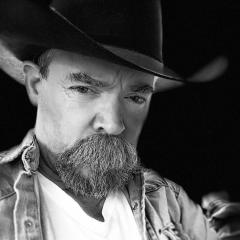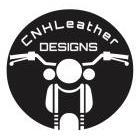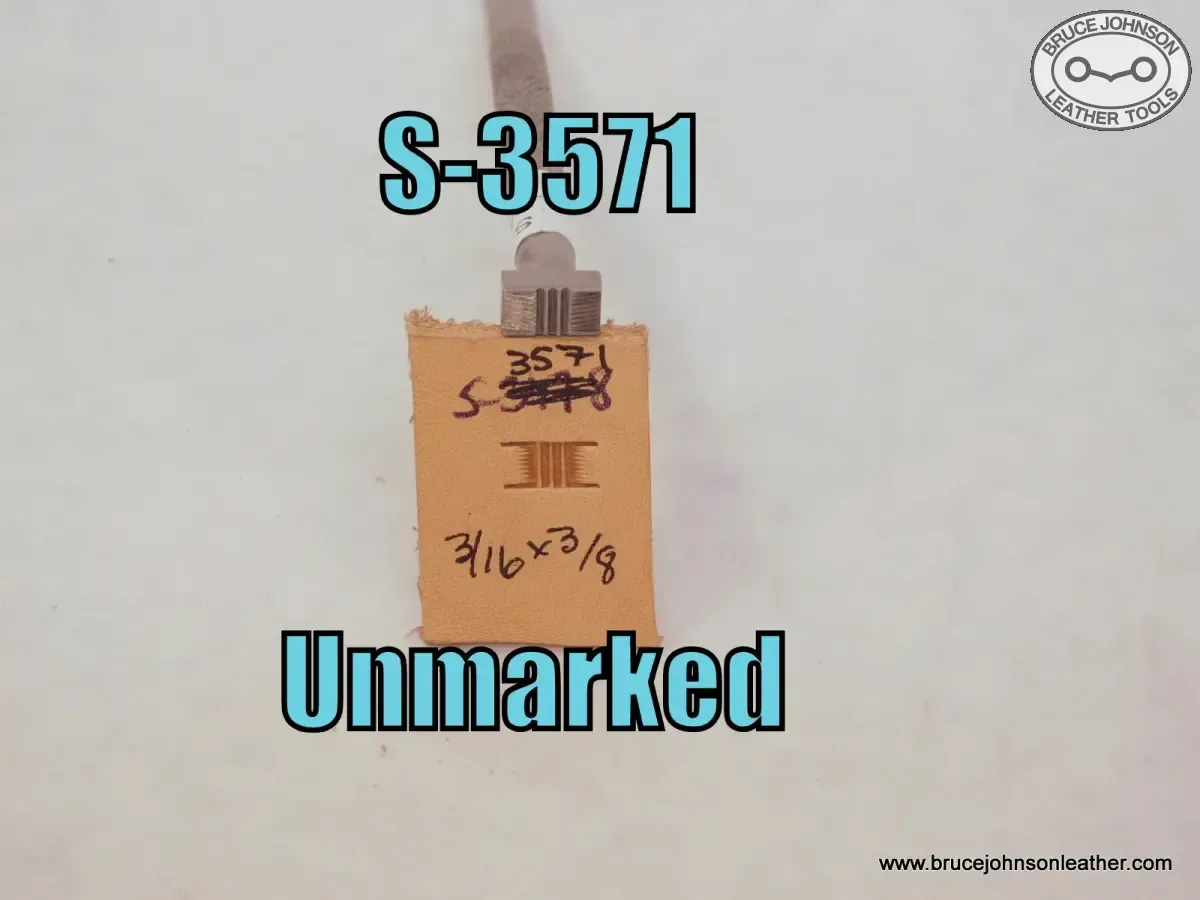-
Posts
4,287 -
Joined
-
Last visited
About bruce johnson
- Birthday 06/15/1960
Contact Methods
-
Website URL
http://www.brucejohnsonleather.com
-
ICQ
0
Profile Information
-
Gender
Male
-
Location
Oakdale, CA
-
Interests
leather tools and history
LW Info
-
Leatherwork Specialty
Leather Tools
-
Interested in learning about
everything
-
How did you find leatherworker.net?
Ive been here from about day one
Recent Profile Visitors
56,892 profile views
bruce johnson's Achievements

Leatherworker.net Regular (4/4)
-

Randall leather sewing machine needs a shuttle
bruce johnson replied to Vicki Vallencourt's topic in Leather Sewing Machines
There is zero reason for you to stay neutral, you are in Conroe and not Switzerland. I was happy to see your name pop up here when you first joined. There is a real lack of understanding about these big old machines and parts sourcing. The guys that knew them inside and out (like my late friends Sam Huey and Keith Pommer) are thinning out. Please feel free to promote away and any information threads or history you want to post will be welcome. I have had nothing but positive experiences with Campbell-Randall. If I was still a maker and not a tool seller, you can bet my supplies would still come from C-R. When I transitioned to refurbishing tools and bench machines I appreciated the support and referrals from Dan early on a lot! -

Randall leather sewing machine needs a shuttle
bruce johnson replied to Vicki Vallencourt's topic in Leather Sewing Machines
Campbell-randall.com @mbnaegle -
The heaviest rawhide comes from slaughter bulls. Percentage-wise, packer bulls are a very small number versus the total number of cattle slaughtered everyday, and not done by a lot of major packing plants. The hides are big and heavy from English breed bulls and especially northern cattle. Commercially, you may run across sourcing those in a smaller plant. Denise and Rod Nikkell used to build saddle trees. They drove to a small processor when they got a call there would be bulls. They picked up the wet hides and fleshed and dehaired themselves. I'm not going to say impossible to find processed bull rawhide but harder than straight run rawhide.
-

Screws ripped out of saddle tree
bruce johnson replied to Mendosa's topic in Saddle Identification, Restoration & Repair
Call your saddle maker and tell them what happened. My guess is that at a minimum you will be told to move the screws and not use the same holes. -
No dog in the fight either but here's my experience. Tippmann originally made the Boss with a cast iron frame. I am not sure exactly when Dwight bought his but I bought mine in early to mid 2000 and it was cast iron. Cost was around $1600 then. Everybody and their uncle was a Tippmann dealer and I'm sure that the profit margin dealer pricing agreements made them $1600 list. Anything else that sewed leather then was $5000 or more. No Artisans, Cobras, or clones then so it was the first somewhat affordable option. I think the aluminum frame Boss came a few years later but not sure on that. I don't recall a lifetime warranty, only one year. I know that a few parts were upgraded and sent out at no charge. I got a few replacement parts that broke later on - rack and cable over time. I don't think they were free but can't say 100%. The lifetime deal on mine was that you send the machine in to them, they'd go through it for something like $100 0r $150 and they would rewarranty it again then. Obviously living close and driving it over, they might do repairs or adjustments as a favor in that business relationship. When I sold mine, I sent it to them, they went through it for the fee and sent it on to the buyer with the warranty. In use, I sewed some 415 but mostly 277 or 346 on top, one size smaller in bobbin. The short throat was really limiting for some of my work. Still for belt and edge sewing it was good. My late wife and a 14 year old son could sew on it. My current wife sewed a bunch of production belts on it when we were dating. The Boss likely ran $200,000 or more through it. If I was buying today - Outlaw if I was to buy a hand crank. You may not think you need more throat space but its enough of a plus that the cost would have been worth it for me. If you want to add another $1000 then the Cobra 26 is a solid choice unless you are sewing saddle skirts. Reach for Rundi Johnson's #26 and you will pull back a bloody stump.
-

Help Needed:About wiping the glue and edge paint
bruce johnson replied to kellyswanson's topic in How Do I Do That?
All glues are not the same and all edge paints aren't either. As said, most contact cements on the surface can be removed with a crepe block or eraser. Realize that the solvent in them makes them penetrate the leather a bit and that won't wipe off. It will block stains and dyes depending on how deep it goes. If you have to rub much to remove cements then the surface of leather will abrade. From there on will not take dyes and finishes the same as the leather around it. Edge paints - not all the same - I used the Fiebings a fair amount on smaller stuff. It was OK, kind of the standard then. Most of my larger projects had a dyed and burnished edge. My wife is now making a lot of smaller projects from chrome tan leathers. You would be hard pressed to make her switch from the Giardini edge coat system. Jerry Van Amburg spent about an hour with her at Pendleton last fall showing her the steps and tips/tricks for Giardini. Those edges are nice! She orders it from Buckleguy and they have a YouTube on it. -
Don Potter had a reputation as a pretty good maker. I don't know much but there are people in that area who do. One lady we know told me her mother learned to do leatherwork from him in the Livermore/Pleasanton area of California at one time. I don't know when he ended up in Pendleton. At one time he had a fire in his shop and a guy put together a donation deal that several of us sent stuff to get him going again. I think I heard he was working out of the back of an antique store at one time also. I got some of his tools second hand from a guy at the Pendleton Leather Show a few years ago.
-

Where to buy a new machine
bruce johnson replied to DarkHorseFarm's topic in Leather Sewing Machines
Jonathon, You have used a Cobra 4 and comfortable with it, you live in Oregon. Want to save shipping and get a few hundred dollar discount? Leather Machine Co will be at the Pendleton Leather show at the end of October. If you can wait that long. There ya go. Show discount and no shipping. They will tag one for you, bring it to the show, sit you down, and take time to show you whatever you need to know for as long as it takes. They will then take the head off the table, shuttle it all out, and securely pack it into your vehicle. Probably give you free stuff too. If you have never been to a show, Pendleton is a good one to get your feet wet. It is not one of the bigger shows with a feeding frenzy of leather workers. It is a steady easier pace for us vendors. The Leather Machine Co guys are not over run like some shows and have time to spend. If you go, I am usually across the way from them and have free candy, rulers, and stickers - along with some other stuff like tools. -
It has been mentioned on the forum a few times but not as a stand alone discussion topic I can find. A friend and I were talking about this a few days ago. There was a somewhat standard back in the day shared with us by older guys who stamped production work for large shops. After looking a bunch of the older work from saddles to wallets, it generally runs true. It makes for a pleasing visual outcome. Basket stamping - The width of the border stamp should be the width of the end of the basket stamp. Geometric stamping - The width of the border stamp should be half the length of one side of the stamp impression. Two impressions per side. Larger border impressions overpower the stamp pattern and smaller borders lose effect. Whatcha think?
-
0.2 inches is about 3/16 inch and a common size for basket stamps. Closest I've got is this probably McMillen as far as dimensions and pattern. It has more weave accent lines though. Here's what I've got - https://brucejohnsonleather.com/products/stamping-and-carving-tools/basket-stamps
-
Back from Sheridan and catching up. First off, It'd be hard to find that part commonly. I don't have any, sounds like Campbell-Randall doesn't, so that leaves Eli Schlabach or Jim Brainerd. On the American crank splitters that blade holder is cracked on them more than other makers. Not real common but an observation some of us have seen. Usually just to one side of the center hold down bolt. Some have said the machining and casting were probably slightly off and the tightening the bolts that hold it to the frame stresses it. Most Americans work just fine since the blade is held by the side hold downs and that center bolt. These blades are rigid and don't flex so they act like a splint across that crack. A good repair and the right adjustment should be OK on yours. As mentioned above, there are the tabs on the bottom roller bearing blocks. There is a set of directions for Landis 30 floating around the internet that say to set the blade edge against those tabs to just kiss, run the backup stop bolts to the back of the blade, then back those bolts off to let the blade slide back slightly - 1/4 or half turn I think. Tighten the center bolt and side hold downs. That keeps the blade from grabbing those tabs as the bottom roller floats up and down with thickness changes in the split. That is a good starting place for me. Every splitter has a sweet spot as mentioned for the leather you are splitting. If the blade is too far back then it doesn't completely split all the way and hangs up at the end. Some splitters have some variations in roller position and tabs and the blades need to be even further forward than the stops let it. With those, might have to grind those blades ends back a little to get that blade pushed up there further. Rare but have had a couple like that, at least one was a Champion and both might have been. An old chipped blade worked great, but a new even blade did not until it was tipped a fraction. I set mine usually with a scant 1/16" gap between bottom roller and blade for heavier leather. My thickness gauge is a motel key card. Flashlight and eyeball. I get some people that buy these to split thinner leather or taking off a very small split, On those I go less gap to the bottom roller and drop the top roller down to get some feed pressure between the rollers. They were designed for shoe soles but can be tweaked for thinner leather.
-

Problem with leather splitter/skiving machines
bruce johnson replied to Coloradoguy's topic in How Do I Do That?
Back from the Sheridan leather show this afternoon and catching up. I had a guy bring one of these splitters to my booth to sell me or trade. He was not getting along with it and it was doing what the complaint was here. Once we looked at things and for his needs the one he has is fine. he just needed help. #1 - of course the blade needed sharpening. He took it to a guy sharpening at the show. Now he knows what sharp is. #2 - the blade adjustment was like this in the picture. Serious question - are there directions that show to adjust the leading edge of the blade that FAR back from the top center of the roller? I find it really odd that I saw this on his and now in this picture. That blade edge should be centered over the top center of the roller. This picture and his were too far back and naturally will cut a strap in two easily. I showed him Osborne #84 and #86 I had for sale at the show. I told him how to center it and the light came on. #3 - pulling leather through any pull-through splitter other than a Chase pattern splitter. The leather in front needs to be lower and direction of pull in back needs to be lower than the edge of the blade. The leather almost needs to wrap around the roller slightly to feed correctly. The Osborne #84 has a hold down rod that locks in place, Looks like this Tandy doesn't latch down. Some of the knock-offs do, some don't have a hold down at all. #4 Dwight, I am not understanding your recommendation to loosen the large Allen's that hold the blade to adjust the up and down on the blade. They should be used to set the position of the blade edge in relation to the top center of the roller. Once that is set, they don't need to be touched for anything other than removing the blade for stropping or sharpening. As the blade wears then they go further back in the slots to maintain that blade edge/top center roller position. The thickness is adjusted with the limiting screws and black knobs only, the knurled is a jam nut to help hold that setting. Set them to the stop height, and that's it. For a lap skive they can be all the way up to taper out to a feather edge. Otherwise set to thickness and like you said, pull the leather as you push the handle to start the level skive. Once the the roller tops out against the height adjusters then you can tighten that side knob to hold position and use two hands to pull. Some can just hold that handle forward and pull with the other hand for the whole split or level skive length too. -

Bob Park- Creating Western Floral Designs
bruce johnson replied to SulaSaddlery's topic in Suppliers
His wife recently passed away. That is likely one factor. -
I’ve got them in old sets predating Craftools. They were just different diameter rod with the end cut at an angle and then knurled. could go ahead and checker them too





